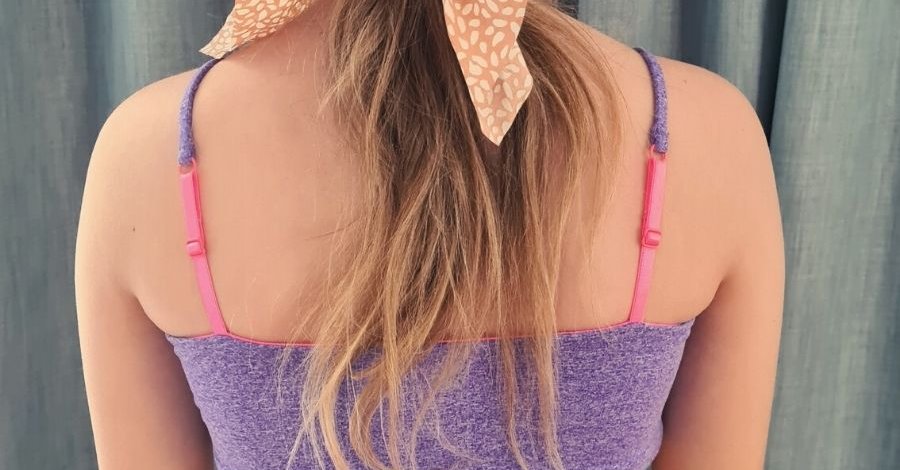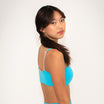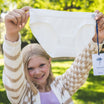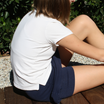Recognizing the Right Time to Replace a Training Bra: Your Detailed Guide

In the journey of growth and transformation that marks the transition from childhood to adolescence, replacing a training bra stands as a significant milestone. This transition is not merely a reflection of physical growth but also symbolizes a stride towards nurturing self-confidence and comfort in a changing body. Recognizing the appropriate time to replace a training bra can play a crucial role in supporting a young individual during this delicate phase.
Join us as we delve deep into this topic, offering you detailed guidance to facilitate a smooth and informed transition.
What Is a Training Bra?
A training bra serves as the initial step in a young girl's journey towards adolescence, primarily focusing on providing a gentle introduction to wearing bras. They are crafted to offer light support, helping girls to gradually get accustomed to the sensation of wearing a bra without feeling overwhelmed. The central aim is to facilitate a comfortable and confident transition during the early stages of breast development, offering a protective layer of coverage that nurtures their growing confidence with their transforming bodies.
How Often Do Training Bras Need to Be Replaced?
The frequency of replacing training bras can depend on various factors, including the rate of growth and the quality.
Here are some general guidelines to consider:
|
Criteria |
Description |
|
Growth Spurts |
During periods of rapid growth, body size changes may necessitate new bras. |
|
Wear and Tear |
Regularly inspect the bras for loose threads, stretched bands, or faded material. |
|
Comfort Level |
If discomfort or complaints about the fit arise, consider a replacement. |
|
Every 6–12 Months |
As a general guideline, considering a check and possible replacement every 6–12 months can be a good practice to ensure comfort and support. |
How to Tell if You Need to Replace Your Daughter’s Training Bra?
Identifying the right time to replace your daughter's training bra can be crucial for ensuring her comfort and confidence during this developmental stage.
Here are some signs to look out for:
|
Criteria |
Description |
|
Outgrown the Current Size |
If the bra appears too snug or leaves marks on the skin, this is a sign that a larger size is needed. |
|
Material Deterioration |
Signs like pilling, thinning, or a loss of elasticity in the fabric are indicators that the material has worn out. |
|
Structural Damage |
Any evident issues, such as protruding underwires, missing hooks, or fraying straps, suggest a replacement is due. |
|
Personal Discomfort |
Pay attention to your daughter's own feedback. If she mentions any unease or dissatisfaction, a new bra should be considered. |
|
Changes in Preference |
As she matures, her tastes may evolve, possibly leading her to prefer a different style, thus indicating a need for a new purchase. |
What to Consider When Choosing a New Training Bra?
Selecting a new bra isn't merely a matter of grabbing any available option; it's about making the correct choice. Let's take a look at some of the key factors to consider:
- Fit and Comfort: It should provide a snug fit without being too tight or too loose. Pay attention to the band and straps to ensure they don't dig into the skin but stay in place securely.
- Material: Opt for fabrics that are soft and breathable to prevent any skin irritation, especially during prolonged wear.
- Style and Design: Choose a style that aligns with the young girl's needs, including options like seamless designs for a smooth appearance and wire-free options for support. Incorporating fun patterns and colors can make the experience more enjoyable.
- Measuring: All girls bodies are different, so measuring to find the perfect size is important. Measuring both the band size and bust size will help to ensure you find the perfect fit. We recommend basing her size primarily on the band at this stage of development.
- Personal Preference: Always prioritize the young girl's comfort level and personal preference. Encourage her to express her feelings and choices openly during the selection process.
How to Make Training Bras Last?
To extend the lifespan of training bras, proper care and maintenance play a critical role. Consider implementing the following suggestions:
- Use Gentle Washing Techniques: Hand wash them in cool water to maintain their quality and structure. Plus, air drying is preferred to prevent potential damage from the dryer.
- Utilize a Mesh Bag: Protect the bra in a mesh laundry bag when using a washing machine, preventing tangling, distortion, or stretching.
- Maintain a Varied Collection: Have three bras available for rotation throughout the week: one to wear, one as a backup, and one in the wash. This approach helps in reducing wear and tear, allowing them to retain their shape and elasticity over time.
- Proper Storage: Lay the bras flat for storage, as it helps to maintain their original shape and structure. Folding or crumpling bras might seem like a space-saving tactic, but doing so can cause several issues, such as shape alteration and material stress.
Replace Your Girl's Training Bra With Bleuet

As young girls gracefully step into their teenage years, the question of when to replace a training bra naturally comes to the forefront. It's the perfect time to introduce them to bras that not only align with their budding style but also promise enduring quality. Here's why Bleuet is the best companion during this significant transition:
- Unbeatable Comfort and Longevity: Bleuet offers bras that are a harmonious blend of softness and durability. The dual-layer fabrics are crafted to gently embrace the changing bodies, fostering both comfort and confidence during this vibrant phase of growth.
- Styles to Adore: Bleuet showcases a range of styles that are bound to be a hit with young girls. From the supportive Iris Bra and the versatile Bleum Bra that eliminates the need for hooks or wires to the playful Aster Organic Bra that brings a splash of fun with its two-way color reversible feature, there's an option that resonates with every young girl's preference.
- Celebrating Diversity With Inclusive Sizing: With sizes ranging from 8 to 24 and a beautiful selection of neutral tones, Bleuet embraces diversity, ensuring every young girl finds her perfect match. The unboxing experience is also designed to make this important milestone a joyous occasion, adding a sprinkle of excitement to the journey.
- Ethical Choices and a Hassle-Free Shopping Experience: Bleuet stands firmly against fast fashion, partnering with responsible manufacturers to offer products that are both sustainable and ethically produced. Moreover, the brand facilitates a smooth shopping experience with free returns and exchanges, allowing young girls to find their ideal fit and aesthetic with ease.
Choosing Bleuet represents more than just a choice of a garment; it signifies entering a realm of high quality, enduring design, and ethical practices, making the transition of replacing a training bra a delightful and affirming experience for growing girls.
Conclusion
The process of replacing a training bra is a notable event in a young girl’s life, highlighting a period of both physical and emotional growth. To this end, understanding the right time to replace a training bra can be instrumental in fostering a sense of comfort and confidence during this phase. Through this guide, we have equipped you with the necessary insights to make this change a positive and affirming experience. Remember, being attentive to the signs and maintaining open communication can be the cornerstone of a successful transition, ensuring that every step is taken with assurance and readiness.
FAQs
What is the difference between a training bra and a bra?
A training bra is designed for young girls who are just beginning to develop breasts. It provides minimal support and focuses on comfort, helping them transition smoothly into wearing bras. On the other hand, a regular bra offers more support and structure, catering to the needs of more developed bodies.
What is the average age to get a training bra?
The average age to start wearing a training bra can vary, but it's generally around the ages of 8 to 14. It largely depends on the individual's rate of development. It's important to have open conversations and observe physical signs to determine the right time to introduce a training bra.
How many times can you wear a training bra before washing it?
It's advisable to wash a training bra after 3-4 wears, but this can depend on the individual's activity level and personal preference. Maintaining hygiene is crucial, so if the bra is worn during physical activity or if the wearer sweats a lot, it might require more frequent washing.









Leave a comment